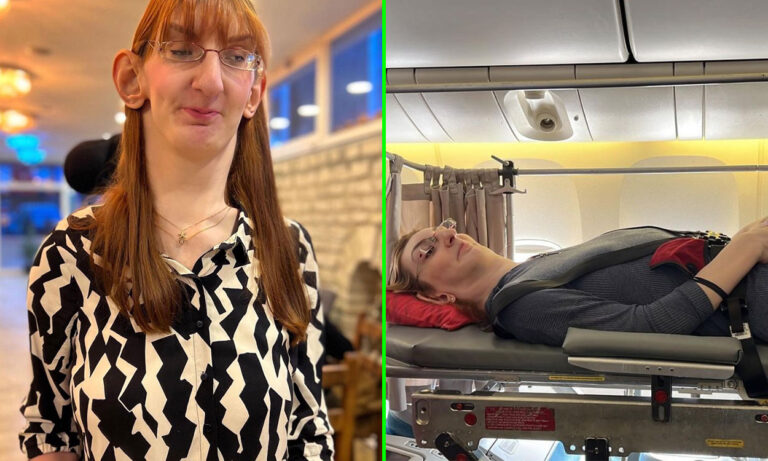World’s tallest living woman finally flies after aeroplane crew makes surprising accommodation
14-hour-long flights can be strenuous and tough for most of us. Now, imagine you’re having to endure a 14-hour-long flight, but as a seven feet tall woman. Rumeysa Gelgi—who currently holds the Guinness World Record for the tallest living woman—recently completed her first ever aeroplane trip, travelling from Turkey to San Francisco.
According to Insider, Turkish Airlines modified one of its planes with Gelgi specifically in mind. It removed six seats and replaced them with a special stretcher, where the world record holder could then lie for the entire duration of the journey.
Due to her stature—coming in at a whopping 7 feet 0.7 inches—the 24-year-old had never previously been able to fly and typically uses a wheelchair or walker to navigate on a daily basis. However, this accommodation allowed Gelgi to travel further than she had ever imagined.
In an Instagram post detailing her experience, Gelgi pronounced the flight as “a flawless journey from start to finish,” and praised the crew onboard for their kindness and dedication—even going as far as to organise a ‘first flight’ celebration once they were in the air.
Promising her followers more flight content to come, Gelgi wrote, “this was my first plane ride but it certainly won’t be my last.”
View this post on Instagram
The Turkish native has a genetic condition called Weaver syndrome, which according to the Cleveland Clinic, is a rare condition that causes bone overgrowth. People with Weaver syndrome are usually very tall and may have distinct facial features, such as wide set eyes.
Since her diagnosis, Gelgi has dedicated a great amount of her time to spread awareness about her condition, but to also champion body positivity. In one of her social media posts, she wrote: “I was born with extreme physical uniqueness, and wanted to have as much of them recognised and celebrated as possible, hoping to inspire and encourage others with visible differences to do the same thing and be themselves.”
View this post on Instagram
It should also be noted that if one Guinness World Record wasn’t impressive enough, Gelgi also holds the record for largest hands, longest fingers, and longest back.






